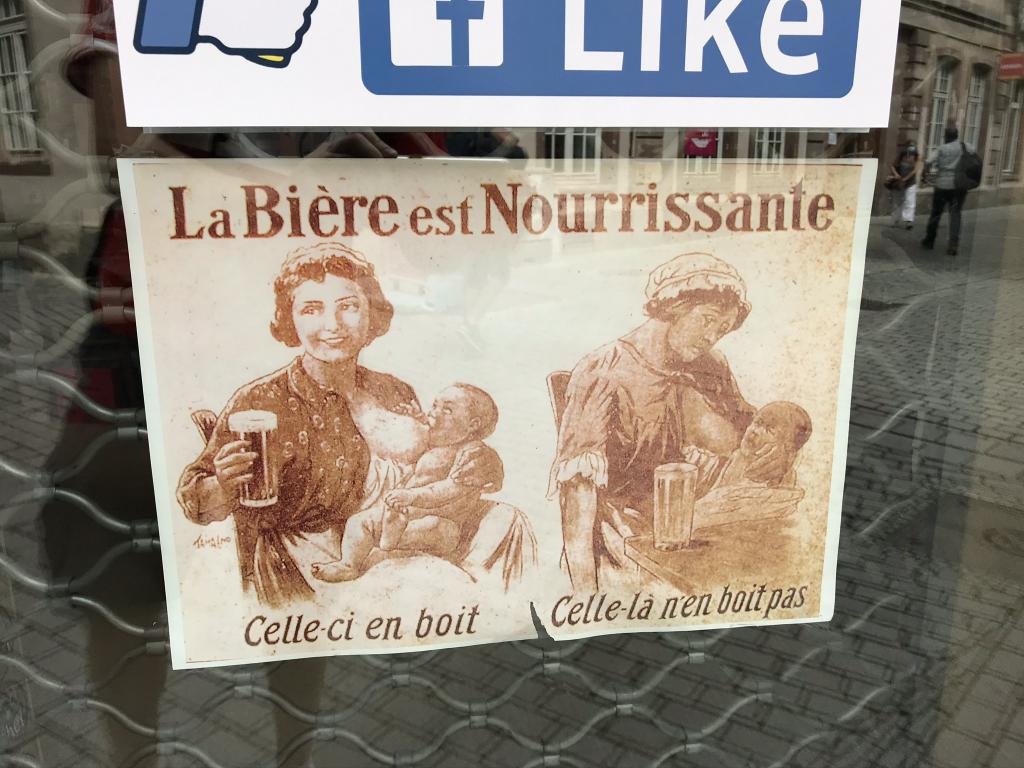Strasbourg (German Straßburg) is a French city on the German border, on the west bank of the Rhine, and that location is probably responsible for its conflict-ridden history. It's the largest city in a region called Alsace (German Elsass) which for much of the past was desirable to whichever side didn't have it. The city was traditionally German until 1681 when the French took it, then the Germans took it and all Alsace back in 1871, which caused the French to seethe in resentment until they wrested it back in the First World War. Aside from the relatively brief Nazi occupation in the Second World War, it's been French ever since.
Sunday, July 5, 2020
If I can reach my destination on a train, that's how I'll usually go. And this time I finally had the chance to ride a TGV, France's famous high-speed trains. TGV stands for Train à grand vitesse, which means, well, high-speed train. The service started with a Paris-Lyon route back in 1981, which made it the first high-speed rail service in Europe. Since then the network has grown to cover most of France and a few cities in neighboring countries, like Stuttgart where I stepped aboard.
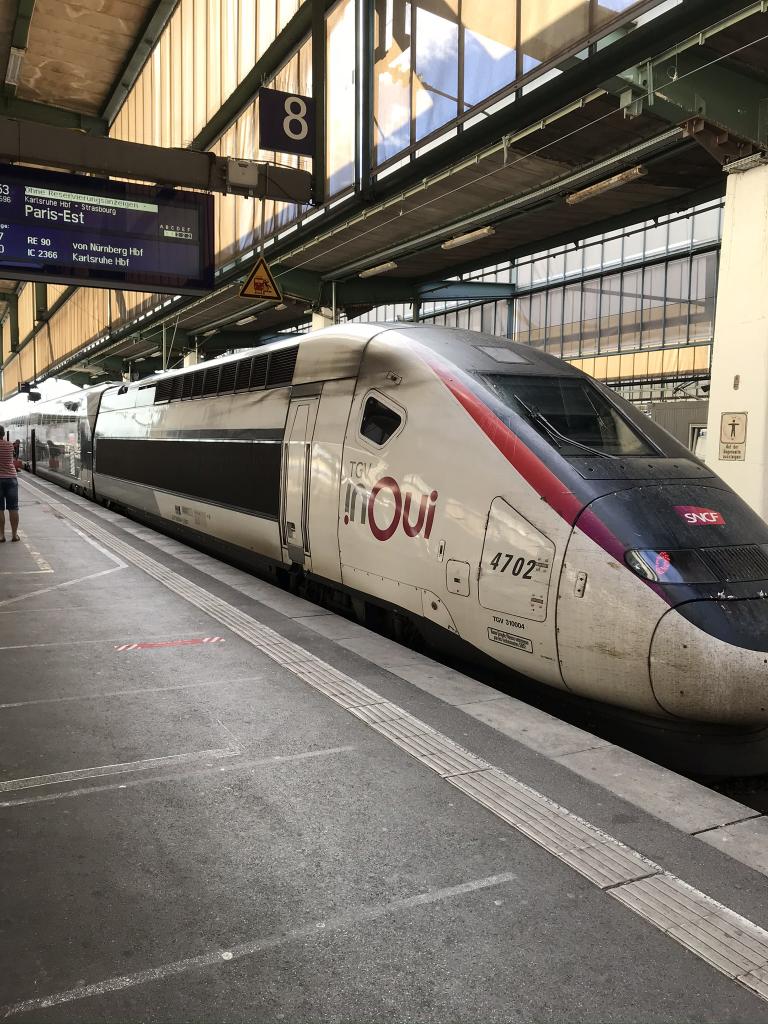
So, how does TGV compare to Germany's ICE, which I've ridden a lot more? Well, it wasn't all that different, and most differences were trivial, like the passenger cars being double-decker; this is not the case on an ICE train. Just like with ICE there was a restaurant car. Also, I think all the passenger cars were just non-high-speed IC train cars hitched to a TGV engine, though I could be wrong. The only area in which I'd say ICE is better is the legroom, that is, this TGV had less of it than an ICE (but still way more than on any plane).
I don't think the train got up to top speed either, but that's to be expected considering how close Strasbourg is to Stuttgart. It took about an hour and a half to reach Strasbourg, with only one stop in between, Karlsruhe.
Strasbourg's historic city center is Grand Île, a large island in the river Ill which flows east into the Rhine. This is where you find all the old medieval buildings, and of course, the cathedral.
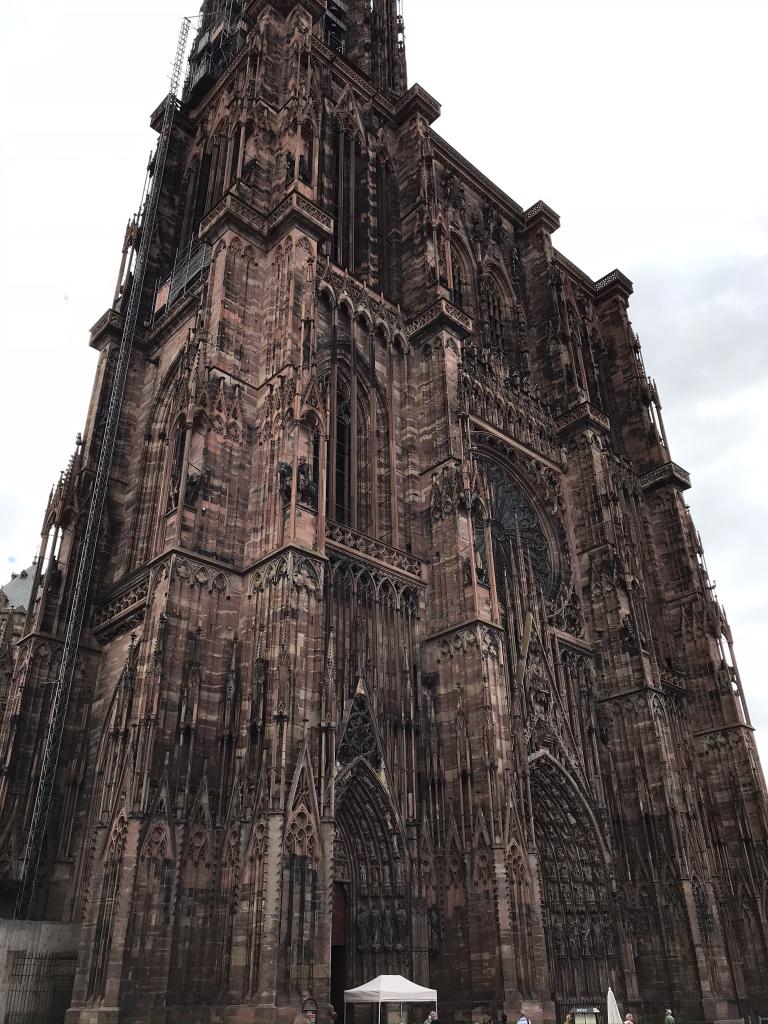
Cathédrale Notre-Dame de Strasbourg took four centuries to build, with its first stone being laid down in 1015 and construction finally finishing in 1439. I must say, no matter how many of these cathedrals I see, I'm always impressed and awestruck whenever I see another one.
So, what's there to drink here in Strasbourg? I finally got my first taste of the local brews over lunch.
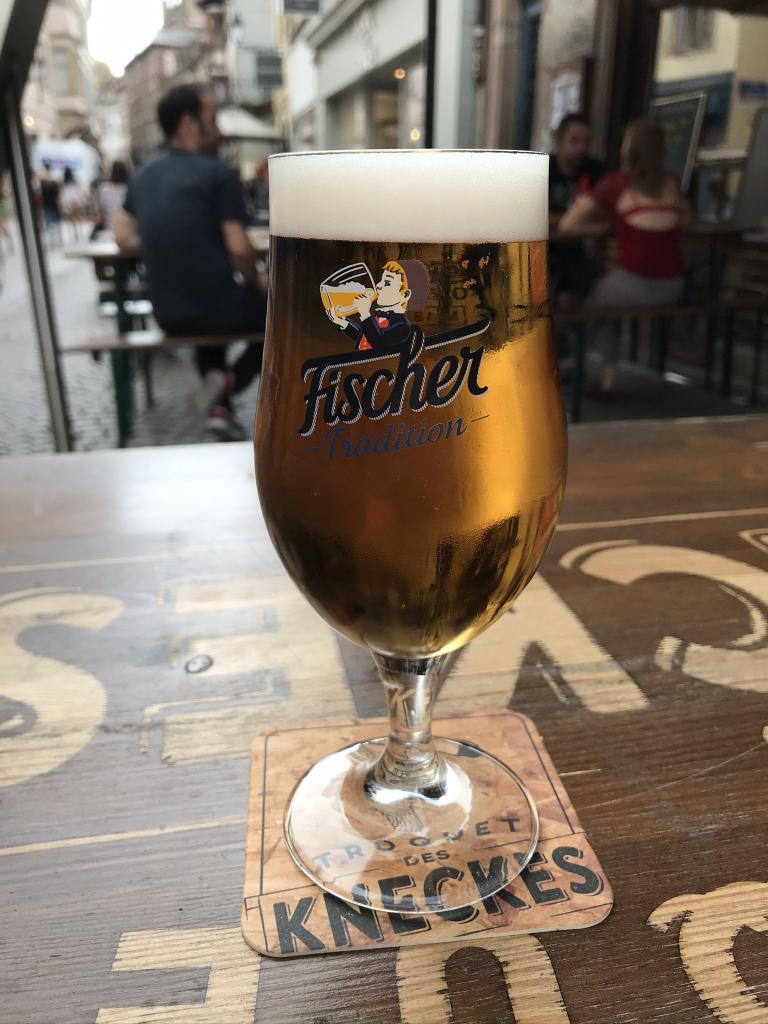
This is 25cl of Fischer Blonde. It seems Fischer is one of the more important macrobreweries in Alsace, having been around since 1821. I really liked the Blonde.
This leads me to point out something minor I noticed about beer in France (or, at least, Strasbourg). Whereas in nearly everywhere else in Europe beer is served either in quantities of a third-liter (30 or 33cl) or half-liter (50cl), here instead of a third-liter the smaller choice is a quarter-liter (25cl). I haven't a clue what the reason for this is. The only other place where I've found beer regularly served up in 25cl glasses is Cologne where it is the traditional way of serving Kölsch.
Well, I didn't want to drink too much that early, so after lunch I was riding a tram up to the European Quarter, site of some important buildings I may not have been able to enter but could at least take pictures of.
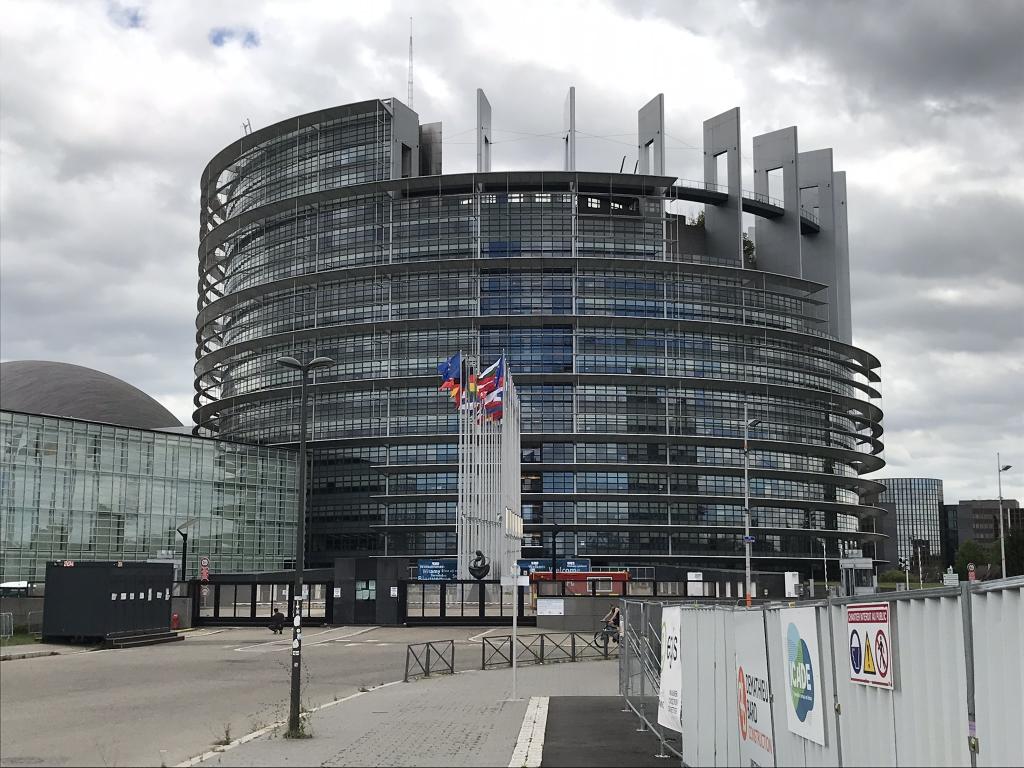
This is the main meeting place of the Parliament of the European Union. This is what makes Strasbourg one of the four capitals of the EU, the others being Brussels, which hosts the European Commission (the executive branch) and the Parliament's secondary meeting hall, Luxembourg, where the Court of Justice is based, and Frankfurt, home of the European Central Bank. This building is some distance northeast of the city center, at an intersection of the river Ill with a canal that leads to the Rhine.
It was around here where I started to wish I'd brought a bike. Along the river and the canals there are miles and miles of walking and bike paths. It reminded me a little of similar trails in San Antonio, which is probably the only time anything in France will ever remind me of anything in Texas.
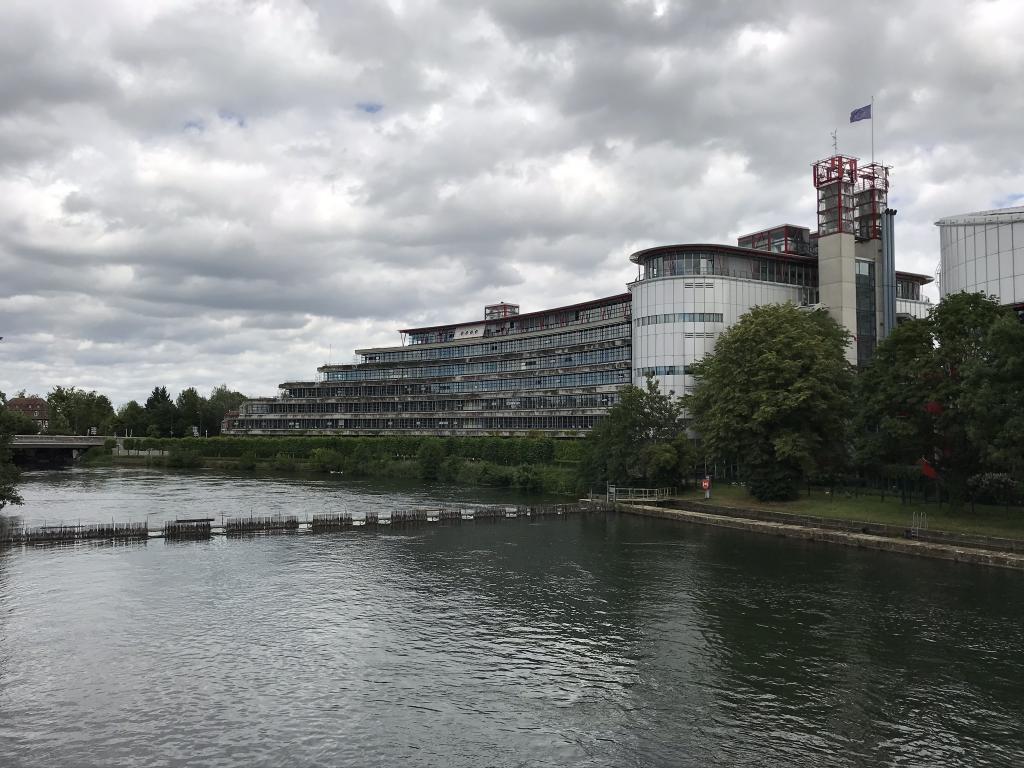
This is the European Court of Human Rights. This is nothing to do with the EU at all, but is part of something else called the Council of Europe.
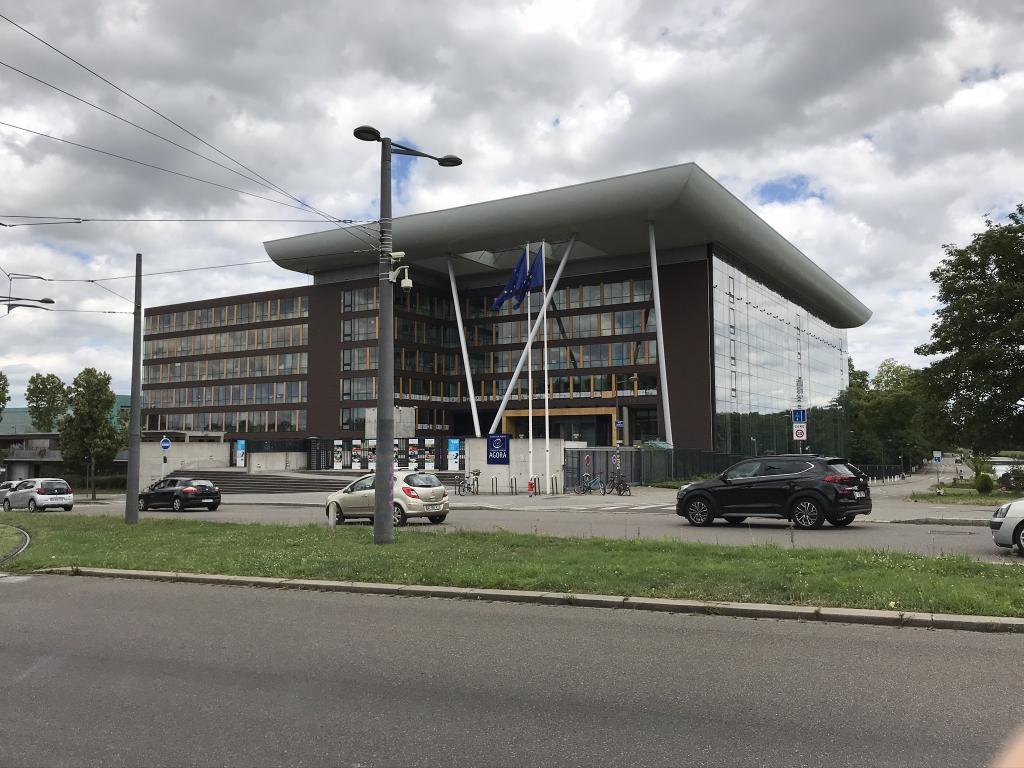
The aforementioned Council of Europe is headquartered here in the Agora. Now, you probably already know what the European Union is, but what is the Council of Europe? As I said above, it's nothing to do with the EU. The Council of Europe is a human rights organization, and at 47 members has a bit more member countries than the EU which only has 27. The Council is dedicated to such things as monitoring elections to ensure fairness, as well as ending torture, forced labor, and capital punishment.
Now where did I learn all that stuff about the European Council? Surprisingly not from Wikipedia. I was about to head back to the city center when I kept seeing signs pointing to somewhere called Lieu de l‘Europe (Place of Europe). Just out of curiosity I went there and found that it was a rather small but worthwhile museum. Within le Lieu de l'Europe you'll find a short walking tour, which takes some time to get through, around walls covered with informative pictures and text, trilingual in French, German, and English, about the history of the European Union and Council of Europe and how they function, as well as the history of Strasbourg.
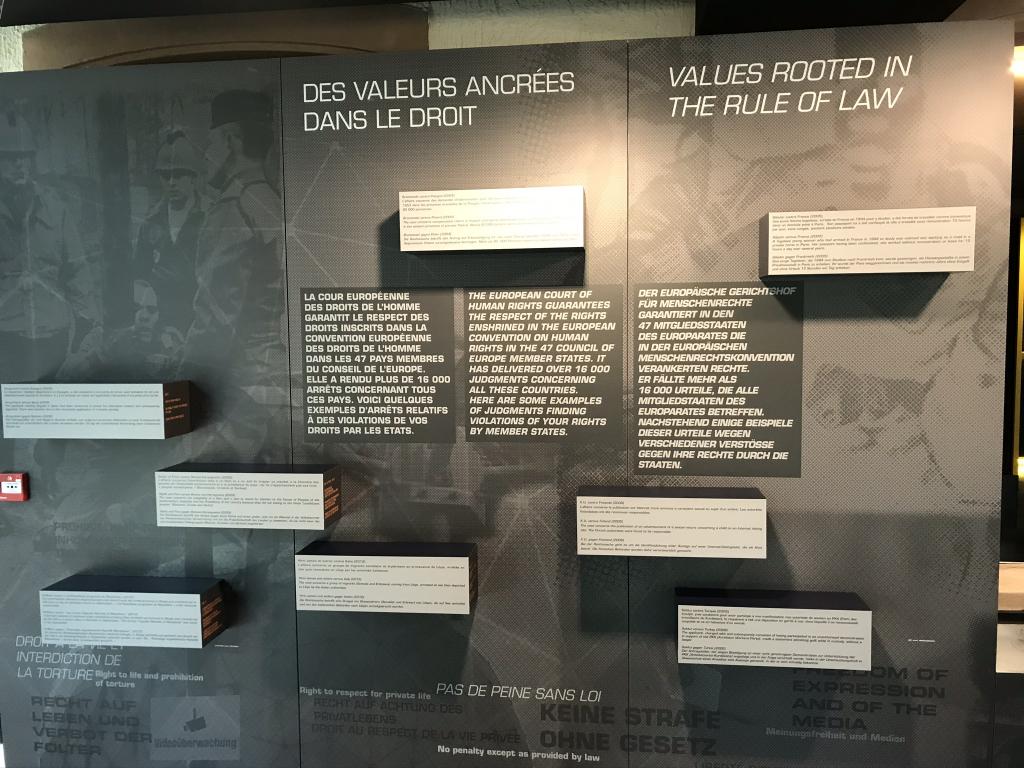
Part of the exhibit on the European Court of Human Rights.
The last part of the walkthrough was about the 1000+ year history of the city all this was in, Strasbourg.
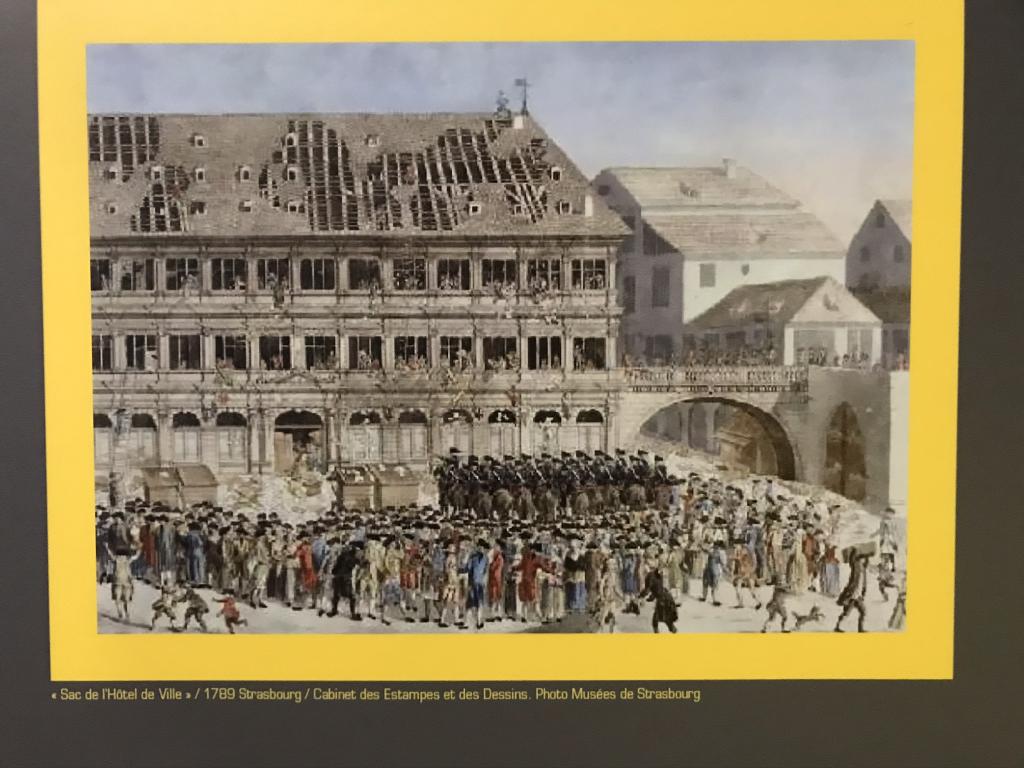
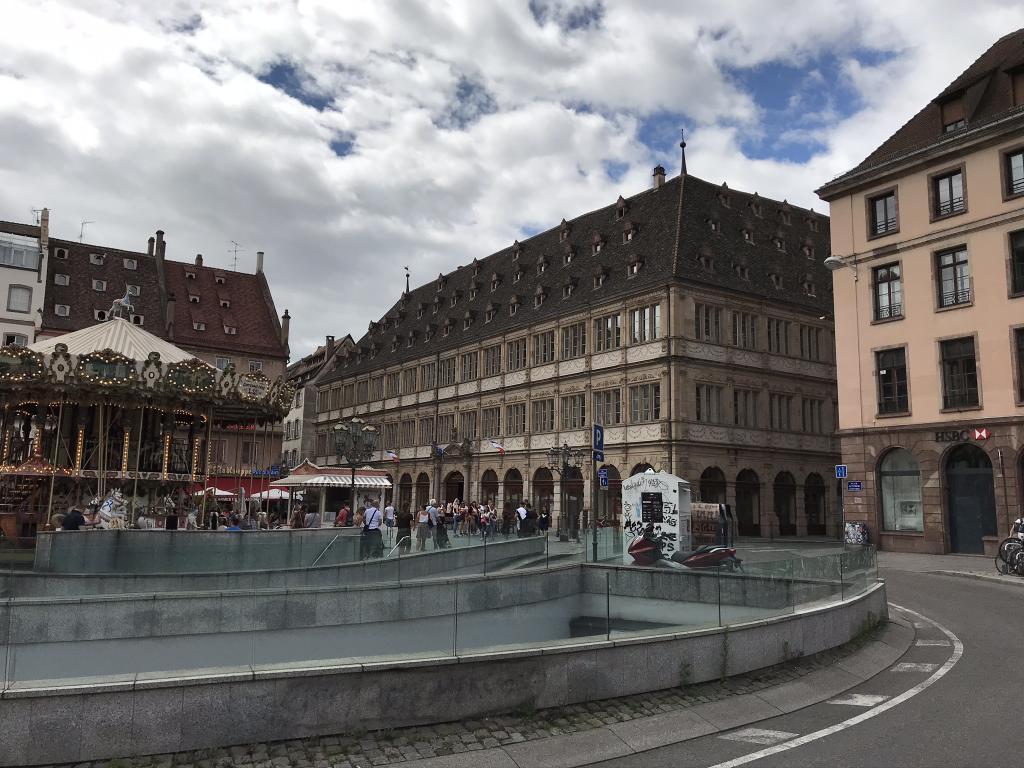
On the top is a painting of the City Hall in 1789 after being burned during an uprising during the French Revolution. Beneath is that building today, which is no longer City Hall but rather the Chamber of Commerce. Strasbourg was important in the history of the Revolution, as a certain revolutionary song was penned here, "La Marseillaise," which today is the French national anthem.
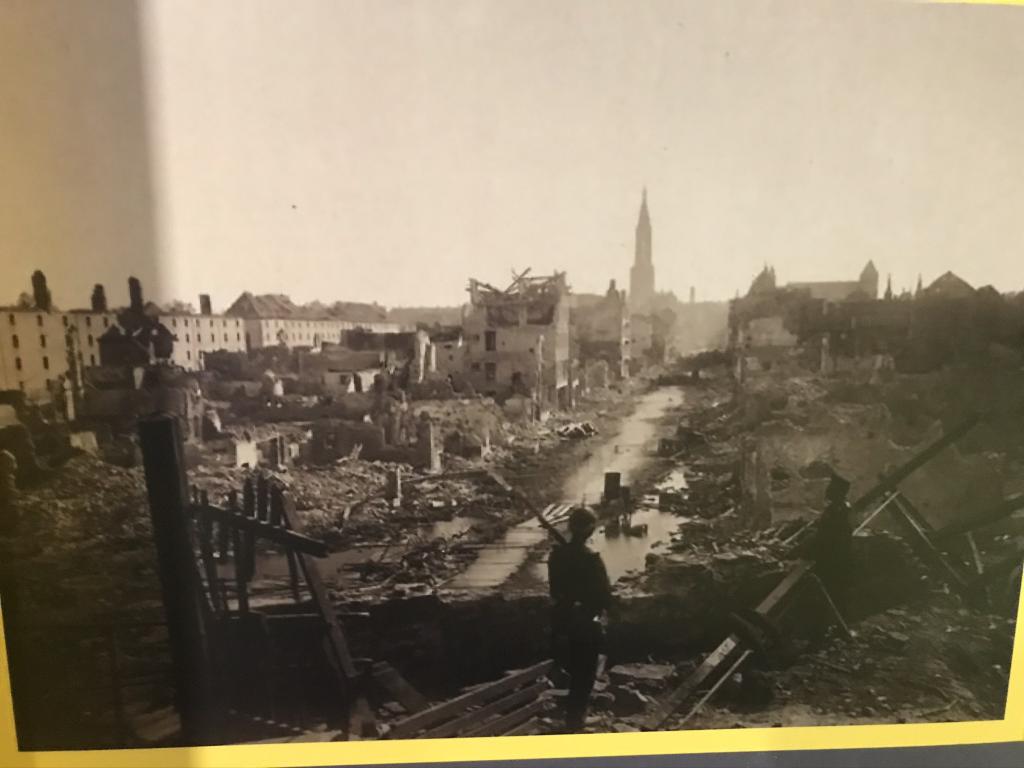
Strasbourg in 1870 after the Germans came through during the six-month Franco-Prussian War. After this, French Strasbourg became German Straßburg once more, and would remain so until the end of WWI when it reverted to France.
So what language to people speak in a place that's changed hands so much? These days, mostly French. Traditionally, this was a German-speaking region, with the everyday language being the Alsatian dialect. Alsatian is closely related to the nearby Swabian, spoken in southwest Germany, and Swiss. During the first period of French rule, before the Germans reclaimed it in 1871, Alsatian continued to be the people's language even as they increasingly considered themselves French by nationality. French only started to seriously displace Alsatian in earnest when France reclaimed the territory after WWI, because national unity had become a much more important concept in France during those decades when Alsace was not part of it.
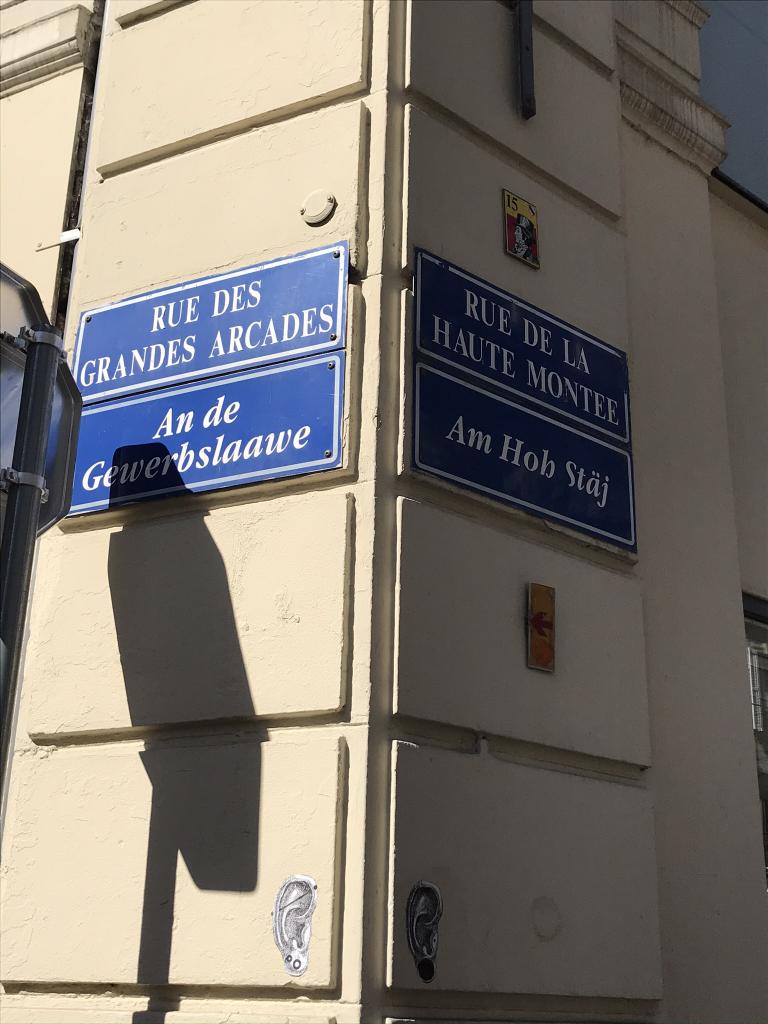
Recently, however, France has started to recognize that regional languages are part of its national heritage. All over Grand Île street signs are bilingual in French and Alsatian.
So on the way to my next destination I needed some caffeine but didn't want to sit down, so I got some coffee I never expected to find in France: Seattle's Best. Unlike other coffee I've had under the Seattle's Best name, this actually tasted as good as the best coffee I've had in Seattle. This was how I first discovered that the French really know how to make some great coffee.
What kind of establishment do I stop at in every city I visit? An Irish pub. The one I found in Strasbourg was called Dubliners. I did not, however, have any kind of Irish beer; they had some, but I was more interested in trying more Alsatian brews. The first I had was called Fischer Doreleï, an amber ale. Surprisingly, I didn't like it. I'm not sure how to describe it. It was somewhat sweet, and not in a way I'd want a beer to be. It tasted vaguely like a kind of pastry I don't like. Well, that was my impression, maybe if you try it you'll like it.
After an Irish Coffee at Dubliners, I headed on to the next stop on my little pub crawl, a microbrewery called Au Brasseur. "Brasseur" means "brewer." I found out about this place on WikiTravel and will definitely recommend it to anyone passing through the city who loves beer. This place is a restaurant as well as a brewery; I had a Salade Chèvretine for dinner there, along with one of their house brews called Blonde des Bateliers. After I finished that frothy goodness, the barman recommended I try something that wasn't on the menu, a "summer" beer that I didn't catch the name of. I liked this one as well; this was a light cloudy ale with a real citrusy taste to it.
My next, and last, stop of the night after the sun had finally set was a bar called L'Artichaut. Here I found that Belgian beers were quite abundant in Strasbourg. I had intended to mostly consume local beers here but if you're going to offer me some of the best beers in the world... At this place I started with a 50cl class of Karmaliet blonde. After that, nothing else on tap really appealed to me, but in the fridge behind the bar I could see many bottles with Leffe labels. So first, of course, I asked for a Leffe Ruby. They had no Ruby so I settled for the next best thing, Leffe Bruin.
After the glass of Bruin there was no way I was going to drink anything more without getting seriously drunk, so I retired to my hotel for the night. The hotel I stayed at was called Hotel Weber, and really I think there should be an S between the O and the T because even if I had a room to myself, I've never stayed at a place with "hotel" in the name in which I had to walk down the hall just to use a toilet or a shower. Still, it was only 37.60€ so you get what you pay for.
Monday, July 6, 2020
I packed up and checked out of Hotel Weber as quickly as I could, got breakfast from one of the little restaurants in the train station, and then tried to find cool stuff to look at in the city for the next few hours.
I took a tram to Neudorf (German for "new village," an outer residential neighborhood that was built up during the late-1800s era of German rule) but didn't find much there besides apartment blocks and closed restaurants. I rode another tram to Place de la République.
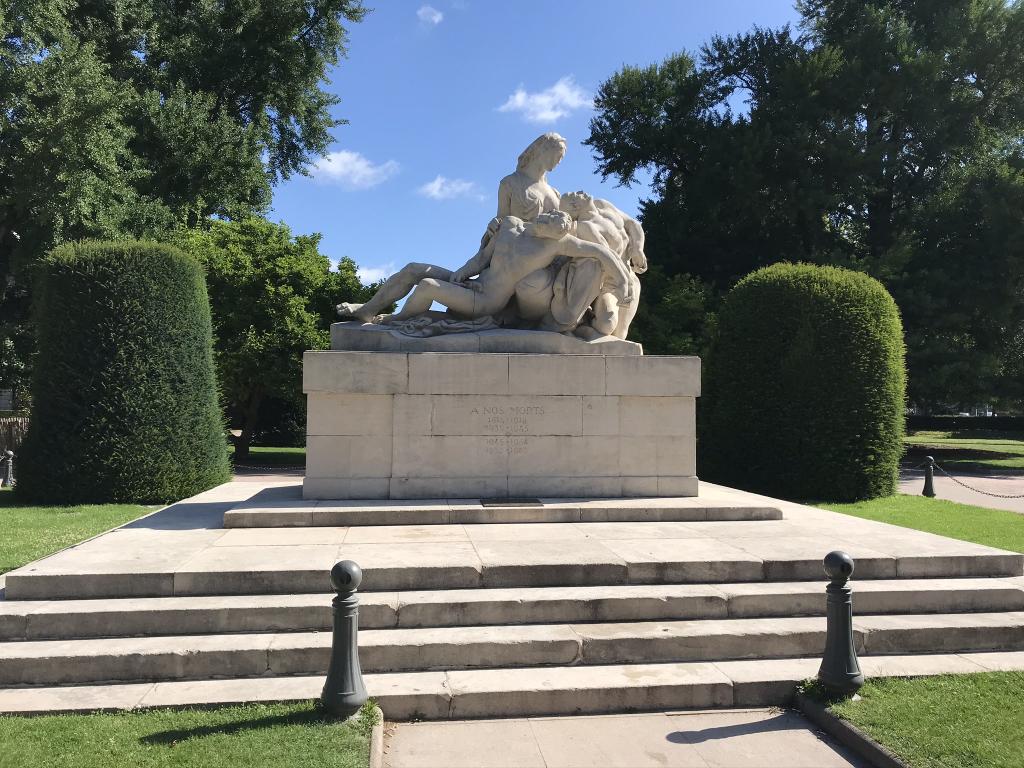
La Place de la République is a circle surrounded by city and department government buildings, and in the center is this memorial to those that died in the two World Wars as well as post-WWII conflicts in north Africa and Indochina.
After bouncing around aimlessly it was finally time for lunch so I stopped in a restaurant not to far from the train station called Kuhn. My lunch was a salad with a kind of Alsatian sausage in it, which I accompanied with yet another Belgian beer (why are they so common here?), Grimbergen. This was Grimbergen's summer ale, and its citrusy taste was pretty much identical to the one I had at Au Brasseur the night before. I had to have one other beer so I followed that up with a Kronenbourg. Yes, I know that Kronenbourg is the most widely globally proliferated French beer, but it's still Alsatian so why not.
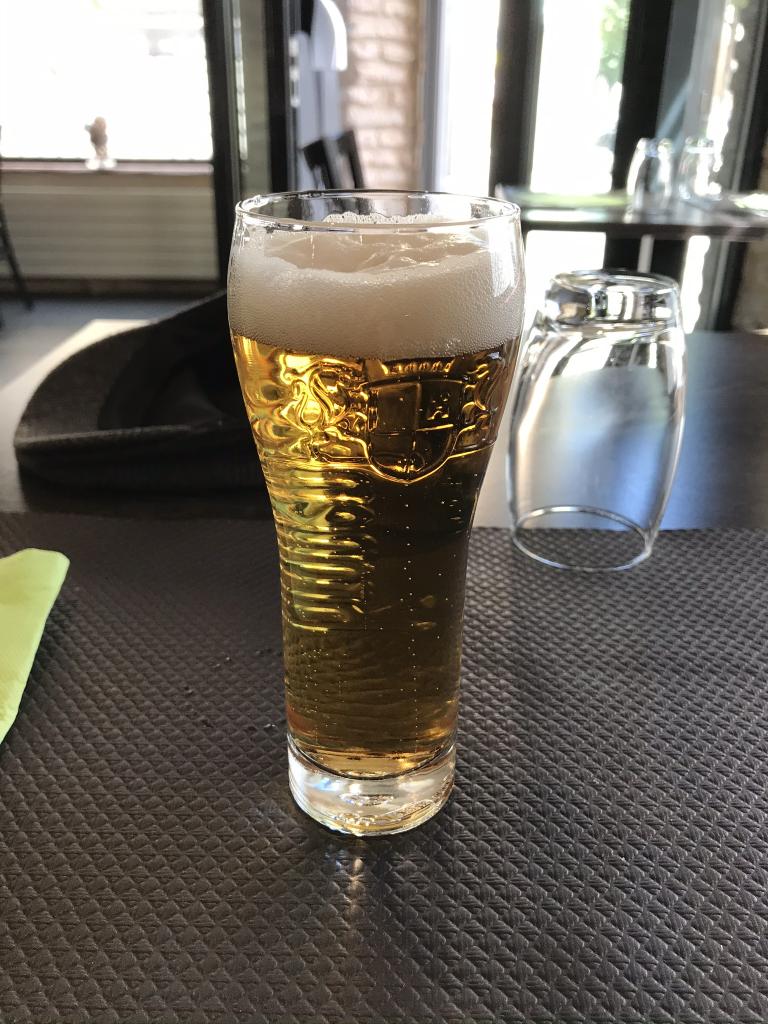
This was rather bitter but I liked it.
So in the afternoon I visited a rather picturesque park, away from the city center and closer to the European Quarter, called L'Orangerie. That name sounded familiar, probably because there was a stage at Tomorrowland with the same name.
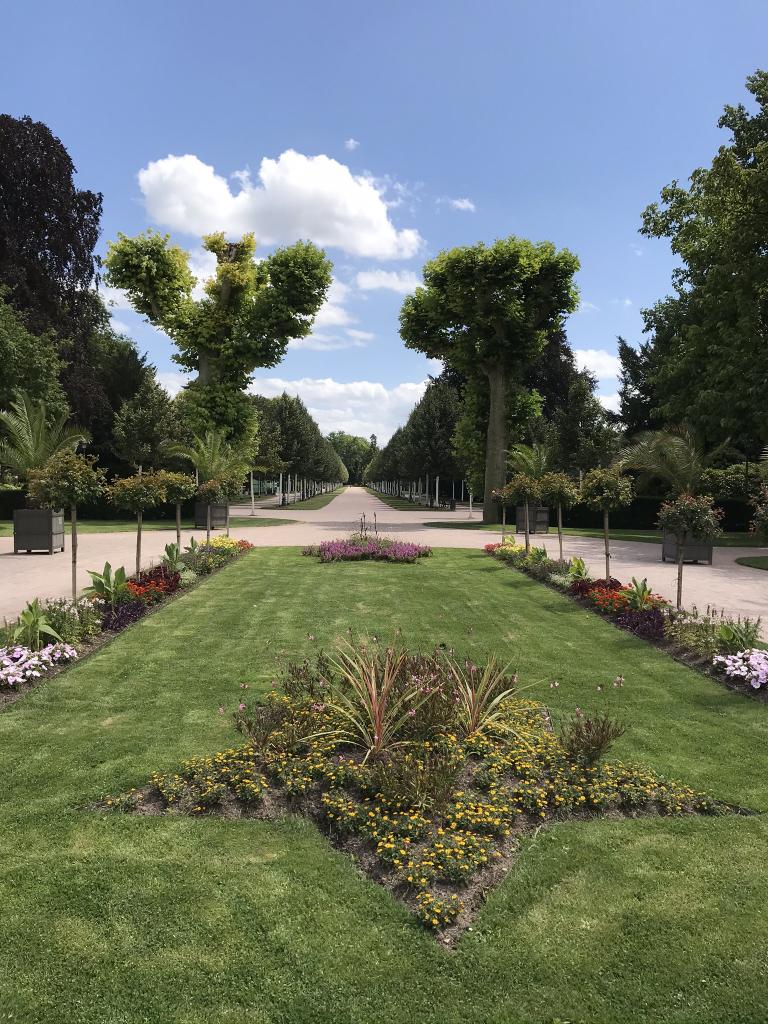
L'Orangerie is full of spectacular manicured gardens like this one.
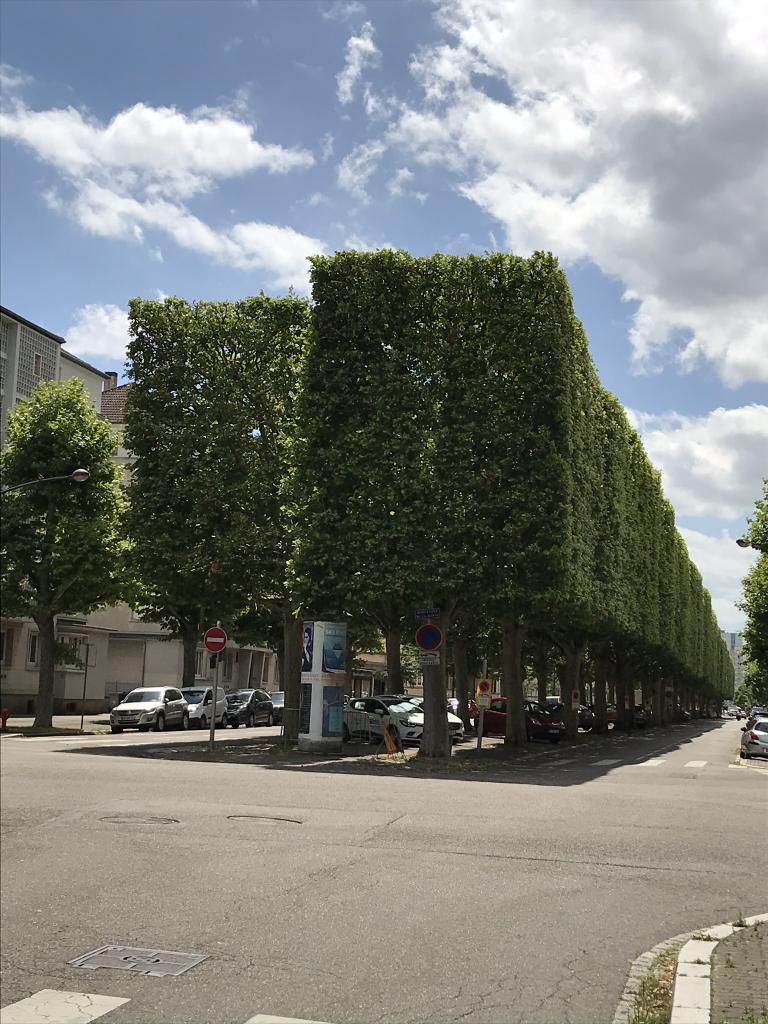
After emerging from the south end of the park I walked down Rue de la Marne which was lined by these interesting trees. I've been informed that this was invented by a landscaper named LeNotre who placed rows of such trees all over Paris.
I arrived back in the city center at the tram hub station called Homme de Fer. Hey, wait a minute, doesn't that mean "Iron Man"? Yes it does...there's an explanation printed on a sign there. Apparently some archeologists in the past dug up a suit of armor there which was missing a head, leading some to speculate that the mask worn by the famous prisoner "The Man in the Iron Mask" may have been the missing part of that suit. (But then again, the historical Man in the Iron Mask probably wore a velvet rather than iron mask...)
Anyway, next to Homme de Fer station I stopped at a place called Europ Café where first I had a Fischer Tradition, pretty good, but nothing unique that stands out about it. After that I had a Fischer Reserve Ambrée, which wasn't so good. Remember what I said yesterday about the Fischer Doreleï amber ale which I didn't like? Their Reserve Ambrée tasted exactly the same. As with the Doreleï, I could finish off the whole Reserve Ambrée, but I didn't enjoy it.
France is still being more strict than I expected with face masks. This whole trip I'd been wearing a Buff over my face in most places, but apparently that's not good enough for the Galeries Lafayette shopping complex or the Cathedral, which weren't letting anyone in without a surgical mask.
So, rejected from the Cathedral, I stopped at a restaurant across the square from it called La Cigogne. On their menu I found something called a Café Alsacien. This was made similarly to an Irish Coffee, but I liked it a little better. They served it in the same kind of glass than an Irish Coffee comes in--it even had the words "Irish Coffee" and a clover along the rim--but instead of whiskey the booze is a locally-produced brandy called Marc de Gewurzt, or Marc d'Alsace, made from the same grapes that Alsatian Gewurztraminer wine is made from. The whipped cream was a specific brand called Chantilly.
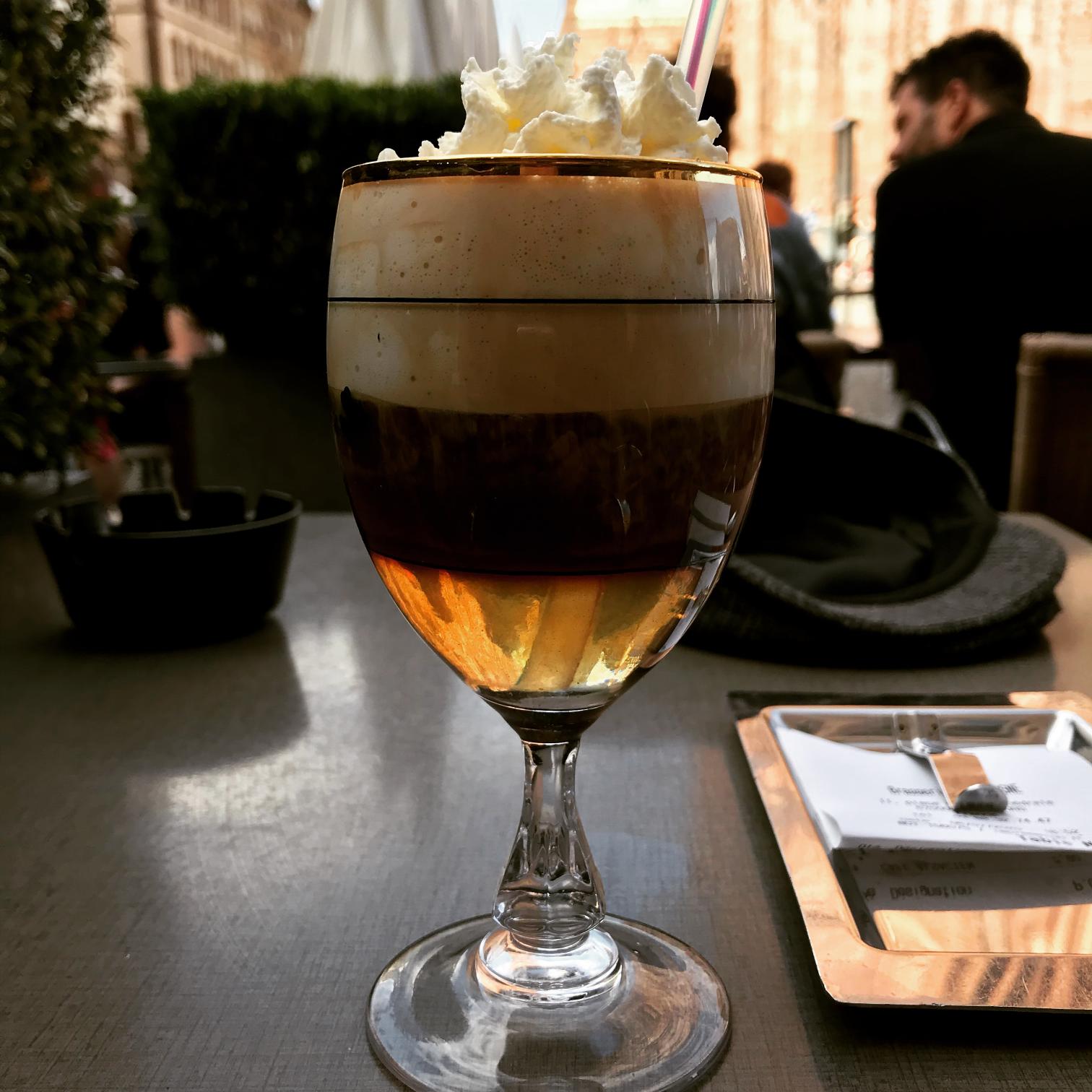
Café Alsacien. I've tried making this a couple times at home but I don't seem to be doing it right. Also, I love Instagram filters.
That wasn't the only thing I drank there, I also had a blonde ale called Licorne Elsass. Not bad.
While walking around the city I stopped into a couple grocery stores to pick up some of my usual edible souvenirs. At a Carrefour I picked up some coffee grounds and some müsli. That coffee...like I said before the French can make some great coffee. I bought a brick of cheap store-brand Carrefour coffee and as I drink some of it at home every other day I'm still amazed at how delicious it is.
At another supermarket, Auchan, I got two local Oncle Hansi beers and a bottle of Marc d'Alsace, the brandy they make Café Alsacien with.
By then it was getting pretty late and I'd need to find dinner and get to my train back to Stuttgart. But I couldn't help stopping at one more establishment, Aux Douze Apôtres ("Twelve Apostles") where they were having happy hour and serving up their Douze Blonde for a discounted price. And after that, a small glass of white wine, specifically Gewurztraminer, made from the same grapes as the aforementioned Marc.
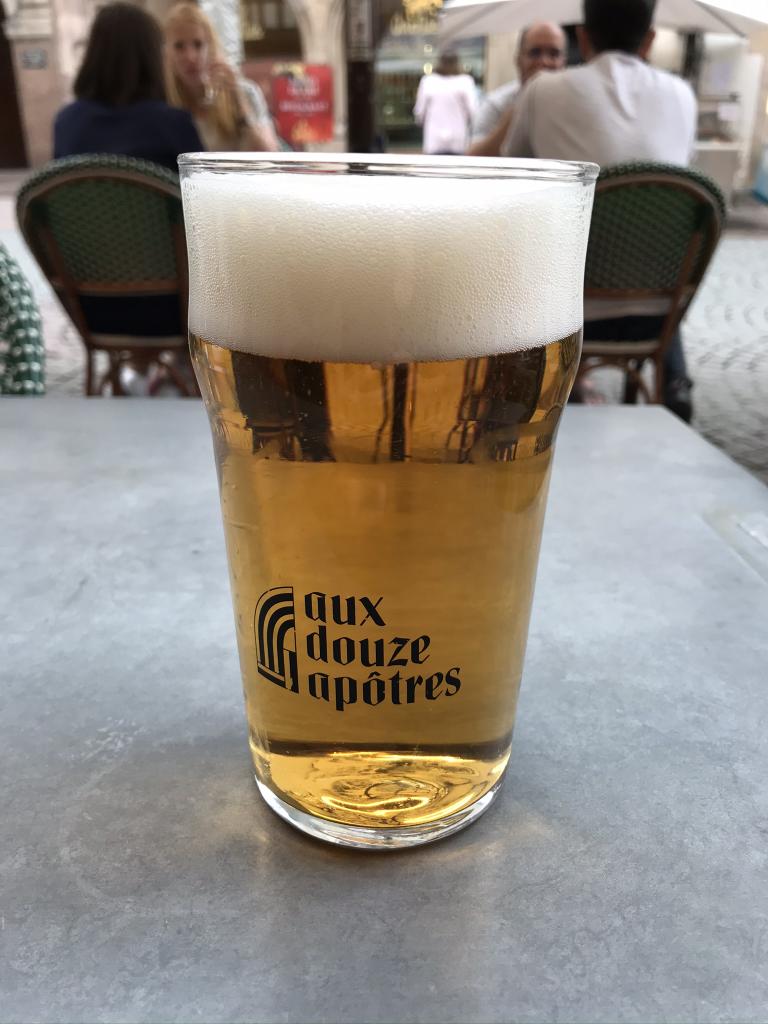
My last beer in Strasbourg, Douze Blonde.
Back at the train station I quickly downed a falafel box from a convenience store before boarding the TGV bound for Stuttgart, which took almost two hours to get back, slightly slower than the trip there.
Final thoughts: this was an enjoyable short trip, and a nice introduction to France. While a lot of it may have looked and felt like "same old same old" after trekking through a dozen or so other cities in northwestern Europe, there was still enough to make it worth the trip. The cathedral was impressive, even if I couldn't go in, the coffee was amazing and so was the beer and wine, public transit worked great, and finally this was the first city I visited where I wished I had brought my bike. Looking at a map outside the train station, I discovered that Strasbourg is at the intersection of two EuroVelo trails, bike paths that stretch across Europe. Next time I visit Alsace, I'll be bringing my bike and riding it between two cities.
